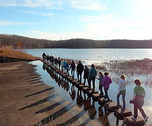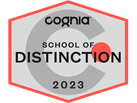IDEAVENTIONS ACADEMY
 Our philosophy on Humanities is a logical follow-on to last week’s topic of travel. When I travel, I experience the culture of the country, or even the city or state. However, the culture of the people that I am visiting has been influenced or formed by their history. Having an understanding of that history allows us to have a deeper appreciation for the people and places we visit. With this in mind, one of our biggest concerns as we planned the curriculum for the Academy was the Humanities. It’s not a concern for the kids who enjoy both STEM and the liberal arts. But it was a concern for those kids who are your really STEMmy kids, the ones who haven’t liked social studies or history so far. The reason to study history is beautifully explained by Peter Stearns in Why Study History for the American Historical Association so I won’t repeat it. Rather, I will focus on the approach to make history and social studies an enjoyable subject for all. Our approach is to first present the story to the kids, in essence, what’s the plot. This will give them the context for the next level of work. Next, we want them to learn to analyze what they read or observe, so that they can draw their own conclusions. Lastly, we use the information that we have learned and critical thinking skills to understand recurring themes throughout history, such as power, leadership, or immigration. Therefore, we set out to make the Humanities class something that they would enjoy, or at the very least, appreciate. Our goal is to make the story of the world, sometimes a beautiful story, sometimes a tragic story and sometimes a frightening story, come alive for the kids Because we live in the United States, we believe it’s important to understand the history and culture of the country that we live in. We also believe it’s important to understand the history of the world we live in. That’s why our 4th and 5th grade sequence focuses on learning the context and story of the United States and the world. To make the story of the world meaningful to the younger grades, we look at history through the eyes of math and science, and tie what we are learning in our other classes with history. This also gives us a very interesting perspective since different cultures and civilizations have experienced periods of scientific or technological advancement at different times. Once in the traditional middle-school grades, 6th to 8th grades, we move to a more analytical class. We present primary and secondary sources where students learn to think like historians, analyzing the context and bias and drawing conclusions from what they are analyzing. Instead of studying the history chronologically, they now examine themes and the relationships between different events or periods of time in history surrounding that theme. Finally, students learn about the United States government and international governmental organizations and laws so that they are able to understand current events. In order to bring it alive, we use a multitude of media. The obvious one is that we read, but we also watch videos, we create projects, we film a documentary, we engage in debate, we question historical reenactors, we role play, and finally, we travel. Surprisingly, the ways to learn about history in a creative and “hands-on” way are endless.
0 Comments
Your comment will be posted after it is approved.
Leave a Reply. |
AuthorJuliana Heitz is co-founder of Ideaventions Academy and is very excited to share the thinking behind the Academy. Archives
October 2023
Categories |
Copyright © 2010-2024| 12340 Pinecrest Road, Reston, Virginia 20191 | 703-860-0211 | [email protected] | Tax ID 27-2420631 | CEEB Code 470033
 RSS Feed
RSS Feed




